How to Respond to the Commitments and Call for Action of the New Urban Agenda?
The New Urban Agenda (NUA) is the outcome document to be agreed upon at the Habitat III cities conference in late October 2016. The draft text describes a shared vision, with principles and commitments, a call for action and an implementation plan. The New Urban Agenda sets the pathway for Sustainable Cities and Human Settlements and is targeted towards key stakeholders involved in urban governance and planning, including nation states, cities, UN agencies, civil societies and NGOs.
Water is embedded within the vision, commitments and call for action of the New Urban Agenda giving impetus to take actions related to urban water management. In guiding these actions, the IWA Principles for Water Wise Cities will provide an important reference point for urban stakeholders to meet the commitments of the New Urban Agenda. Furthermore, there are several other IWA resources that support the commitments and actions of the New Urban Agenda.
How do we implement the commitment to equitable and affordable access to sustainable basic physical and social infrastructure for all?
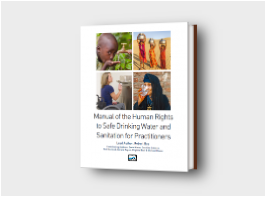 Manual on the Human Rights to Safe Drinking Water and Sanitation for Practitioners
Manual on the Human Rights to Safe Drinking Water and Sanitation for Practitioners
The Manual highlights the human rights principles and criteria in relation to drinking water and sanitation. It explains the international legal obligations in terms of operational policies and practice that will support the progressive realisation of universal access.
How do we implement the commitment to make the most of local resources to ensure sustainability?
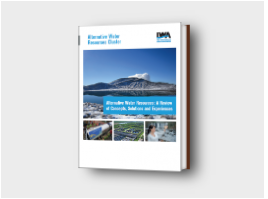 Alternative Water Resources: A Review of Concepts, Solutions and Experiences.
Alternative Water Resources: A Review of Concepts, Solutions and Experiences.
This compendium provides guidance to practitioners to develop a portfolio approach to water resource management that includes making the most of local resources, through reuse, stormwater collection and rainwater harvesting, for example.
How do we implement the commitment to strengthen the sustainable management of resources and strive to transition to the circular economy?
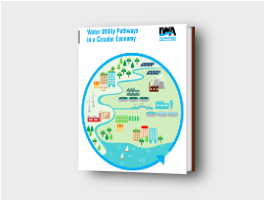 Water Utilities Pathways in a Circular Economy
Water Utilities Pathways in a Circular Economy
The framework supports the identification of opportunities, and the means to make the most of them within three interrelated pathways: the Water Pathway; the Material Pathway, and the Energy Pathway. Regulatory and market levers are identified that, if addressed, will contribute to scaling up and accelerating pathways as water utilities transition to the circular economy. The framework can provide the basis for initiating and developing national or regional dialogues around the water utility pathways in the circular
How do we implement the commitment to promote environmentally sound waste management and to substantially reduce waste generation by reducing, re-using, and recycling (3Rs)?
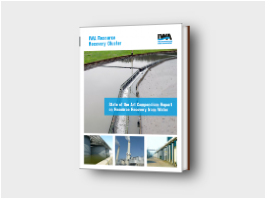 State of the Art Compendium Report on Resource Recovery from Water
State of the Art Compendium Report on Resource Recovery from Water
This state of the art report aims to give water professionals a general overview on available technologies for resource recovery, as well as outline obstacles and opportunities for recovering resources from water in terms of technical, social, economic and political aspects.
How do we work to equip public water and sanitation utilities with the capacity to implement sustainable water management systems?
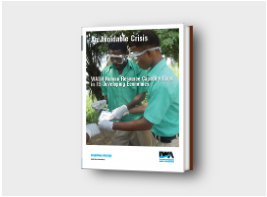 An Avoidable Crisis: WASH Human Resource Capacity Gaps in 15 Developing Economies
An Avoidable Crisis: WASH Human Resource Capacity Gaps in 15 Developing Economies
In this report, the first of its kind, the IWA provides an overarching recommendation for the development of national capacity development strategies that have high-level political buy-in with involvement from multiple actors to ensure sustained, adequate professional and technical capacity. The report also calls for concerted action at regional and global level to collect relevant human resources data, and perform further research to strengthen the evidence base on which action plans and strategies can be built.
How do we implement the commitment to promote conservation and sustainable use of water by rehabilitating water resources within the urban, per-urn and rural areas?
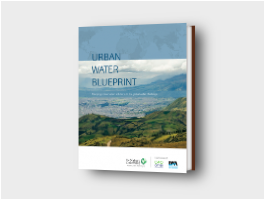 Urban Water Blueprint
Urban Water Blueprint
This report addresses a critical issue facing mayors in cities around the world: access to clean and adequate water supplies. Through case studies representing five proven strategies to watershed conservation — protecting both the quantity and quality of urban water supplies — this report demonstrates that investment in natural infrastructure to preserve drinking watersheds is both an economically viable and environmentally sound approach available to developed and developing cities alike.
How do we promote investments in climate-resilient infrastructure for water, sanitation and sewage?
 The Energy performance and Carbon emissions Assessment and Monitoring Tool (ECAM)
The Energy performance and Carbon emissions Assessment and Monitoring Tool (ECAM)
The ECAM tool enables carbon reporting by water and wastewater utilities and can be used to inform project preparation and financing for infrastructure. The tool establishes a baseline which shows utilities where they stand in terms of GHG emissions, energy consumption and service level, with a focus on the emissions that can be influenced by the utility staff. The tool can help in identifying potential areas for improvement to be investigated.

